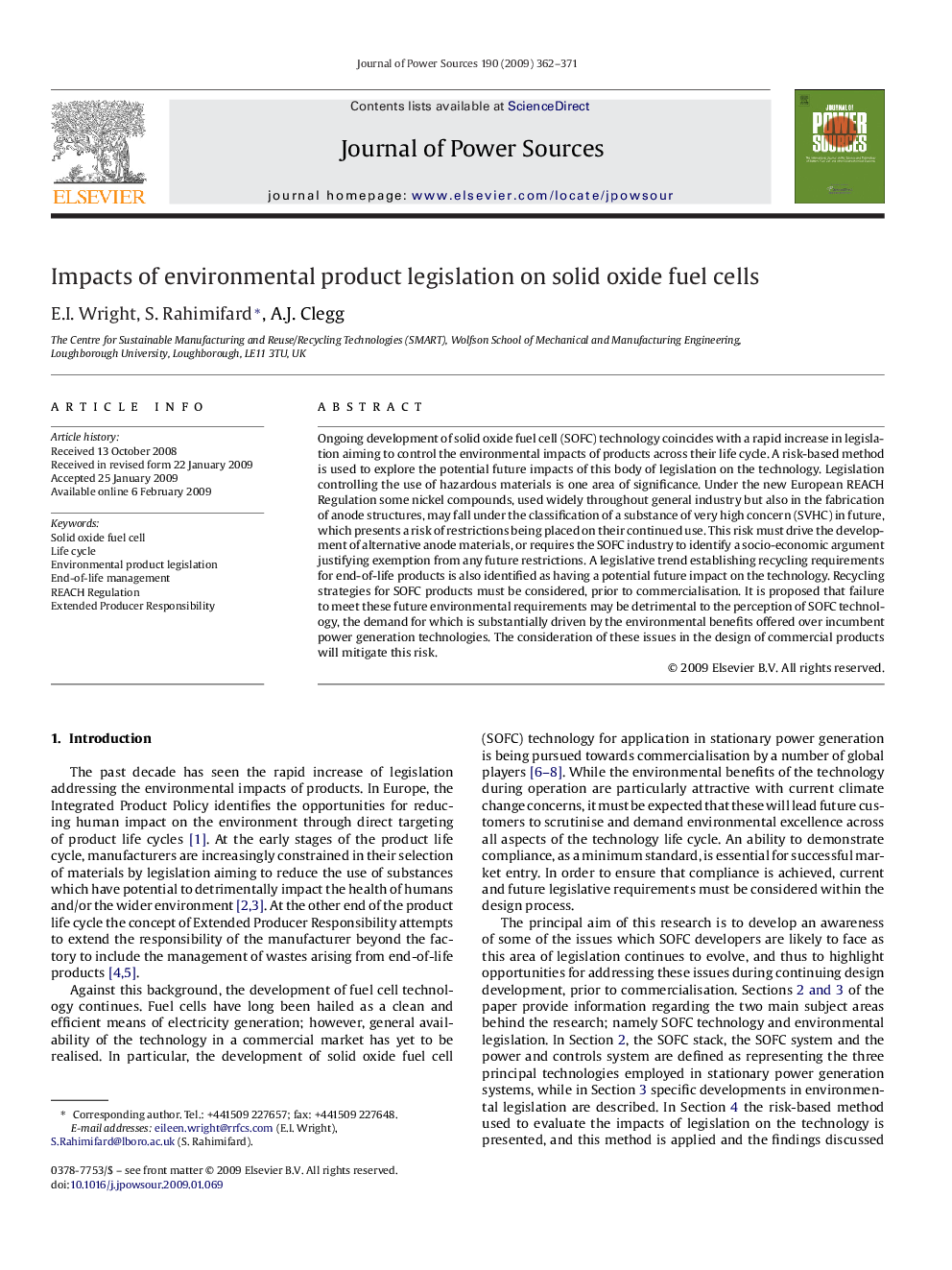| Article ID | Journal | Published Year | Pages | File Type |
|---|---|---|---|---|
| 1290839 | Journal of Power Sources | 2009 | 10 Pages |
Ongoing development of solid oxide fuel cell (SOFC) technology coincides with a rapid increase in legislation aiming to control the environmental impacts of products across their life cycle. A risk-based method is used to explore the potential future impacts of this body of legislation on the technology. Legislation controlling the use of hazardous materials is one area of significance. Under the new European REACH Regulation some nickel compounds, used widely throughout general industry but also in the fabrication of anode structures, may fall under the classification of a substance of very high concern (SVHC) in future, which presents a risk of restrictions being placed on their continued use. This risk must drive the development of alternative anode materials, or requires the SOFC industry to identify a socio-economic argument justifying exemption from any future restrictions. A legislative trend establishing recycling requirements for end-of-life products is also identified as having a potential future impact on the technology. Recycling strategies for SOFC products must be considered, prior to commercialisation. It is proposed that failure to meet these future environmental requirements may be detrimental to the perception of SOFC technology, the demand for which is substantially driven by the environmental benefits offered over incumbent power generation technologies. The consideration of these issues in the design of commercial products will mitigate this risk.
